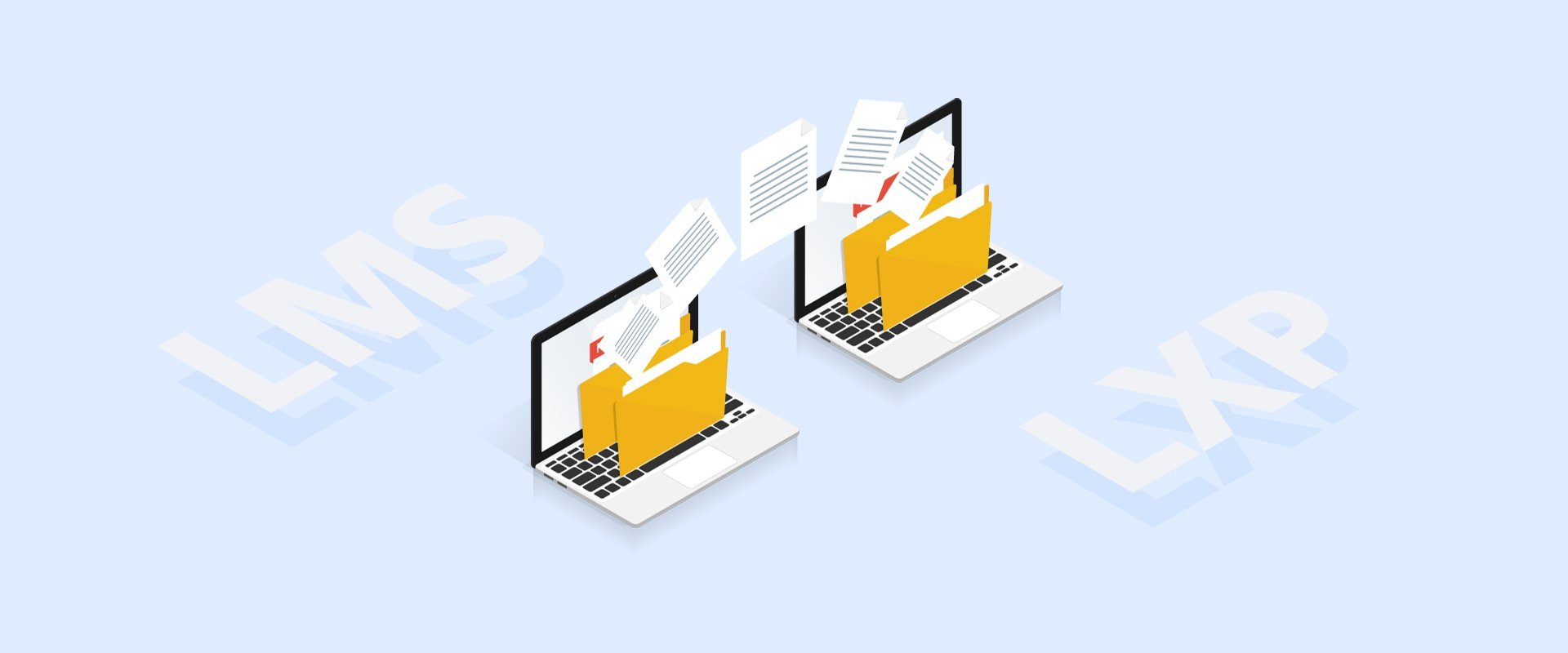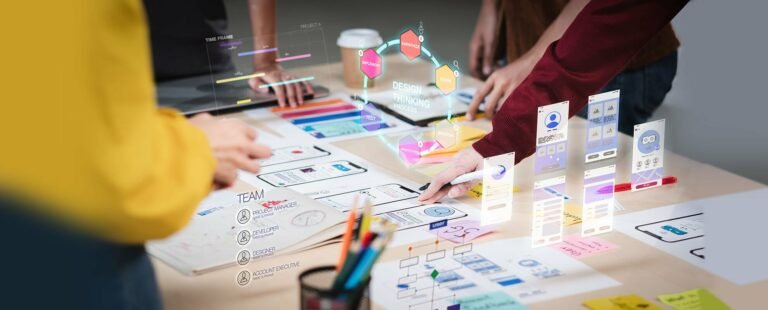LMS to LXP: Migrate to a better learning experience
LMS platforms have aged. They no longer serve the needs of a modern learner. As an L&D professional, it is time to switch from LMS to LXP to ensure that employee training and development is in sync with the needs of modern learning.
Many forward-looking organisations are already contemplating the change. No wonder the adoption of LXP has accelerated significantly in the last couple of years. As the L&D departments look to streamline their training programs, offer their employees a personalised learning experience, and keep track of learning behaviour, the transition from LMS to LXP is inevitable. Not to mention, you will discover that many Wall Street giants rely on LXPs – all the more reason to switch to LXP.
Hence, waiving a flawed system and using a platform more relevant to your employees’ needs would become key to growing your banking, finance, or insurance business. Of course, the transition can seem daunting. However, we can help make the change smoother. In this article, we’ll cover the main benefits of switching to an LXP, and explain how to make a migration from LMS to LXP easy.

Why move on from LMS?
Companies have been using LMSs for decades, taking advantage of several noteworthy benefits. For instance, these systems can support multiple formats and provide a unified platform for all learning activities.
Nevertheless, LMSs are prone to various issues, preventing them from fulfilling the requirements of the modern workplace. Some of the biggest drawbacks include:
- Technical problems when switching to a different LMS
- Low-quality interface and design, resulting in a poor learning experience
- Inadequate learner usage tracking
- Heavy reliance on high-speed connections
- Lack of informal learning data
- Few functions for administrators
- Faulty mobile versions
- Synchronization problems with intranets and current CRM tools
What does an LXP bring to the table?
LXPs successfully address LMS inadequacies to ensure a more efficient training, and ultimately, a more productive workforce. Here’s why integrating with an LXP is one of the wisest decisions you can make:
LXPs allow for actionable learning
Owing to a learner-centric approach, LXPs employ personalized playlists and machine learning to make the whole experience more relevant. The content satisfies your employees’ requirements, offering various recommendations according to training data, users’ interests, and profiles. Therefore, managers don’t need to recommend courses manually – the process is largely automated.
Intuitive Interface
LXPs come with a personalized flair, and participants can navigate them easily. When a user signs in, the system lets them browse lessons, videos, microlearning modules, and any other content. Your team members can also use the platform to develop their playlists, featuring external and internal customized materials.
Plus, LXPs can track people’s progress. It provides information about training due soon or past due, enabling employees to stay on top of their assignments.
Catering to individual needs
A highly optimized LXP features a bunch of different media, such as podcasts, blog posts, online articles, videos, and images. The platform can aggregate these types of content and let the administrators further personalize their training solutions.
Diverse materials cater to a large number of learning styles. Whether your employees prefer a visual, kinetic, or auditory approach, an LXP delivers impressive results.
Convenient Accessibility
More than 4 billion people access digital media using their mobile phones. Since the popularity of the devices is bound to rise, it’s crucial to switch to an LXP.
This is because the platforms feature mobile-friendly apps your team can access anytime and anywhere. They can go through their courses at work, home, or during the weekend without interruptions. As a result, they get learning on the fly to catch up with their training whenever they want.
Social Learning
LXPs give your employees the ability to develop skills by learning from other people within your organization. They encourage your employees to communicate, collaborate and connect with one another. Additionally, the platforms can improve team building, social interactions, and employee engagement, providing a perfect training environment.
Streamlined Data Analytics
Business analytics and intelligence play a key role in L&D initiatives. They allow your organization to monitor crucial metrics and take action to improve the learning process.
By using an LXP, you can collect all sorts of data:
- Performance indicators
- Personal and career development
- Cultural data
- Activity log
- User traffic
- Engagement analytics
Steps to Successful Migration
Now let’s take a look at what it takes to ensure a seamless transition.
1. Pilot
Set up an LXP pilot session with a small group of employees. This lets you gather feedback and monitor engagement. In turn, you can pinpoint any potential obstacles to transforming your L&D sector.
2. Kick-Off Meeting
Analyze the data from the pilot session and figure out if any areas need improving. Schedule a meeting to discuss the strategy for the upcoming training with your managers. Think of a plan and make sure your team has the necessary skills and knowledge to meet project deadlines.
3. Detailed Review
The next stage in the journey is to conduct an in-depth system review. The platform should be analyzed to identify complex customizations, and the migration plan should be mapped out. By taking a comprehensive and flexible approach, you’ll be able to leverage the LXP efficiently while keeping your budget intact.
4. Data Migration
Relocating the information your LMS has collected is an essential step. Identify all precious assets, such as information on the progress of learners, rewards, recognitions, and compliance activity. Perform an audit of the content, determine what will be migrated, and start populating the LXP.
5. Onboarding
Familiarize your staff with their new training platform. Give a presentation on how they’ll be using it and what each component consists of. For example, explain how valuable learning principles (e.g., design thinking and experiential learning) tie into the system. In addition, cover some of the most engaging parts, such as gamification and leaderboards, to arouse enthusiasm.
6. Launch
With your training schedule arranged and your employees eager to start their learning, it’s time to roll out your LXP. Instruct your team to access their content on multiple devices, and make sure to collect feedback. Also, adjust the platform according to your employees’ experience to keep them locked in.
Take your skill development to the next level
The modern workplace is undergoing a digital transformation, and no part of it remains unaffected. The chances are your LMS isn’t what it’s cracked up to be, which is why the switch to an LXP makes sense.
And you won’t find a better learning companion than Learnsure. We use cutting-edge technology and analytics to provide employees with personalized and highly relevant training content. Get your demo version now – we can work wonders for your company.




